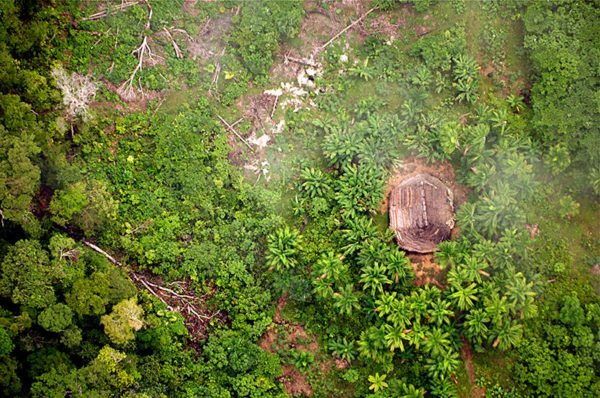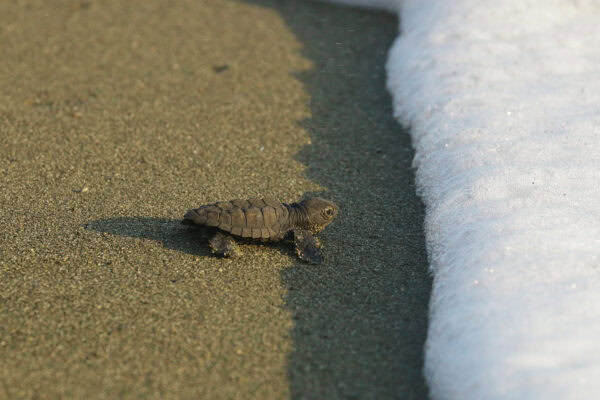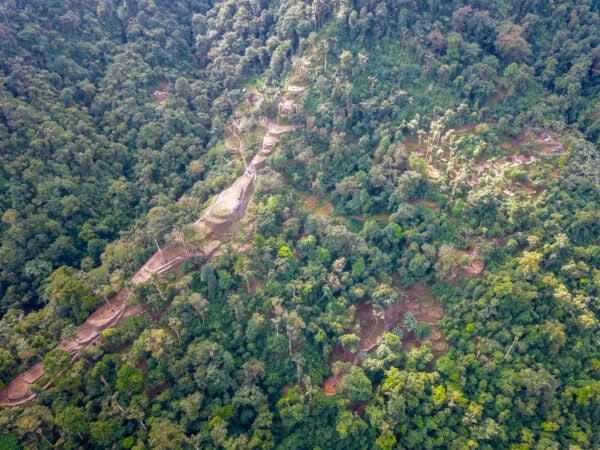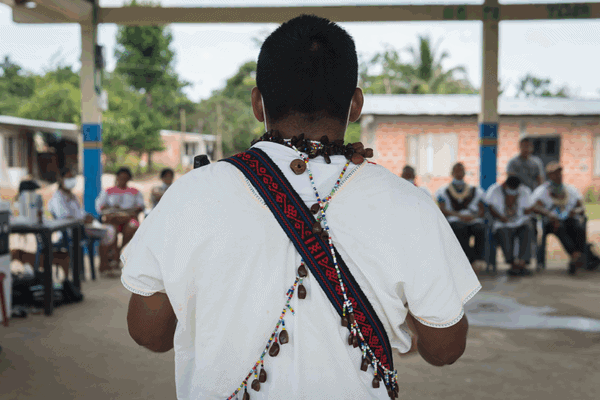Let’s start with a question. If you lived in South America, and had to run away from society, where would you hide?

Aerial view of a maloca (home) of isolated peoples
The most remote areas of the Amazon, where thousands of small rivers are born and eventually become giant waterways—which along the way irrigate millions of trees, and in their final destination feed the Atlantic Ocean—are the homes of indigenous peoples in isolation.
These peoples flee from all contact with anyone outside their group. Their history is full of diseases introduced by invaders of their territories. Foreigners were interested in exploiting their forests and rights. They used violence to enslave the indigenous peoples, banish them, kill them or change their beliefs. Capitalist fevers—gold, cinnamon, rubber, furs, and drug trafficking—afflicted the peoples of the Amazon without mercy. Today, another gold rush makes us contemplate whether the exploitation of the rainforest is a historical cycle that could destroy the forests and their peoples.
That is why the groups we now call indigenous peoples in voluntary isolation resisted and now live and hide in places where they only need two conditions to survive. The first is that no one enters their territories, and the second is healthy forests that can provide the food and resources they need to live. These are large areas of Amazonian forests, which in addition to containing thousands of community histories have the greatest biodiversity on the planet.
These forests and their protection not only ensures the rights of these peoples who have resisted conquest and colonization better than many of us: they also capture the pollution we emit, regulate the climate and provide water to the world as a whole. They are some of the best-preserved forests on the planet.
For 500 years, these indigenous peoples have witnessed ideas and projects that have been strangling the Amazon by not recognizing the importance of leaving nature alone.
Deforestation comes from the outside in, entering through its main artery, the Amazon River. Extractive and development initiatives such as hydroelectric projects, hydrocarbon exploitation and the growing green deserts of soy or grazing pasture that seek economic benefit over cultural values, the health of the forest’s inhabitants and the planet, are the trend.
These peoples require our solidarity, and it is time we lend them a hand in their defense of the forests. The proposal is simple: it requires that large areas of forest be protected in law and practice, ensuring that no activity other than life itself is permitted inside. Therefore, protecting the Amazon is the same as protecting indigenous peoples in isolation.
Protecting indigenous communities in voluntary isolation in the Colombian Amazon protects the rainforest. Read how. #LetThemLive Share on XShare this post
Bring awareness to our projects and mission by sharing this post with your friends.





You do great work. However, I’m miffed that all enviro organizations now use the term rainforest instead of jungle. What’s wrong with “jungle”?